选择当前活动的execel单元格


打开MD5加密工具---因为不是美工,做工比较粗糙,请见谅,但是很实用!

选择文件
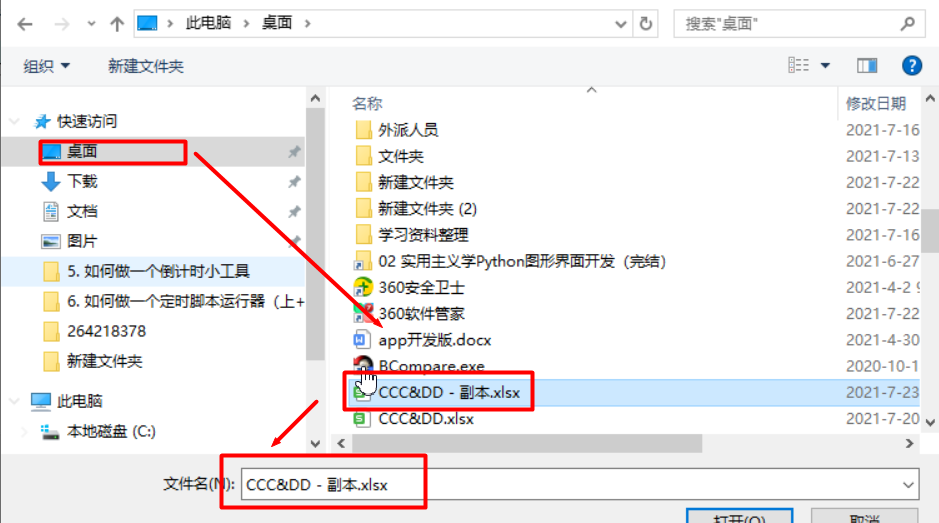
选择要加密的列

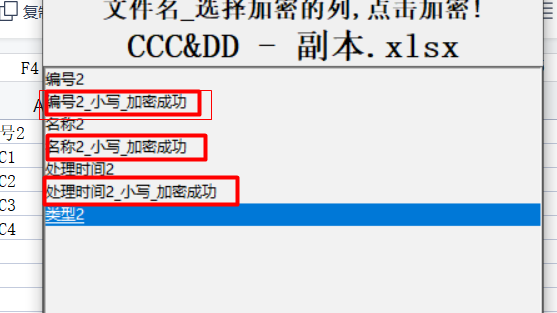
加密成功后结果如下:

代码如下:
from tkinter.filedialog import *
from tkinter import *
import openpyxl
import hashlib
info ={'path':[]}
#字体样式
_font = ['Hack', 20, 'bold']
_font_zi = ['Hack', 15, 'bold']
# 每一个sheet固定的列
def get_max_row(sheet):
i=sheet.max_row
real_max_row = 0
while i > 0:
row_dict = {i.value for i in sheet[i]}
if row_dict == {None}:
i = i-1
else:
real_max_row = i
break
return real_max_row
def make_app():
app = Tk()
Label(app,text='MD5加密工具',font=_font).pack()
Label(app, text='文件名_选择加密的列,点击加密!', font=_font_zi).pack()
Label(app,name="f_name", text='暂无文件', font=_font).pack()
#fill=BOTH 左右两边 expand=True 上下两边
Listbox(app,name='listbox',bg='#f2f2f2').pack(fill=BOTH,expand=True)
Button(app,name='open', text='打开excel文件',command=ui_getdata,font=_font_zi,width=1).pack(fill=BOTH,expand=True)
Button(app,name='compress_min',text='MD5加密小写',command=md5_min_T,font=_font_zi).pack(fill=BOTH,expand=True)
Button(app,name='compress_max',text='MD5加密大写',command=md5_max_T,font=_font_zi).pack(fill=BOTH,expand=True)
#初始框大小
app.geometry('400x800')
return app
#ui界面交互
tou_sheet=[]
def ui_getdata():
f_name = askopenfilename()
#赋值--路径添加到数据字典中
info['path']=f_name
if f_name:
app.children['f_name']['text'] = f_name.split("/")[-1]
#得到文件
again_get_cloum(f_name)
def again_get_cloum(f_name):
wookbook = openpyxl.load_workbook(f_name)
book_sheet = wookbook.active
list_box = app.children['listbox']
# 缓存清空数据
list_box.delete(0, END)
tou_sheet.clear()
for yy in range(1, book_sheet.max_column + 1):
print(str(book_sheet.cell(1, yy).value))
tou_sheet.append(book_sheet.cell(1, yy).value)
list_box.insert(END, book_sheet.cell(1, yy).value)
#加密功能
def md5_min_T():
#重新得到最新的列
# 得到文件
f_name_s = info['path']
if f_name_s:
wookbook = openpyxl.load_workbook(f_name_s)
book_sheet = wookbook.active
listbox = app.children['listbox']
colum = listbox.get(ACTIVE)
cloum_num=tou_sheet.index(colum)+1
book_sheet.insert_cols(cloum_num+1, 1)
#循环行
for x in range(2, get_max_row(book_sheet) + 1):
if x == 2:
book_sheet.cell(1, cloum_num + 1, book_sheet.cell(1, cloum_num).value+"_小写_加密成功")
book_sheet.cell(x, cloum_num+1, md5_min(book_sheet.cell(x, cloum_num).value))
wookbook.save(f_name_s)
# 得到文件
again_get_cloum(info['path'])
def md5_max_T():
#重新得到最新的列
# 得到文件
f_name_s = info['path']
if f_name_s:
wookbook = openpyxl.load_workbook(f_name_s)
book_sheet = wookbook.active
listbox = app.children['listbox']
colum = listbox.get(ACTIVE)
cloum_num=tou_sheet.index(colum)+1
book_sheet.insert_cols(cloum_num+1, 1)
#循环行
for x in range(2, book_sheet.max_row + 1):
if x == 2:
book_sheet.cell(1, cloum_num + 1, book_sheet.cell(1, cloum_num).value+"_大写_加密成功")
book_sheet.cell(x, cloum_num+1, md5_max(book_sheet.cell(x, cloum_num).value))
wookbook.save(f_name_s)
# 得到文件
again_get_cloum(info['path'])
def md5_max(s):
return hashlib.md5(s.encode()).hexdigest().upper()
def md5_min(s):
return hashlib.md5(s.encode()).hexdigest()
#主显示框
if __name__=='__main__':
app = make_app()
app.mainloop()
同理
SM3加密工具代码如下:
from tkinter.filedialog import *
from tkinter import *
import openpyxl
from math import ceil
info ={'path':[]}
#字体样式
_font = ['Hack', 20, 'bold']
_font_zi = ['Hack', 15, 'bold']
def make_app():
app = Tk()
Label(app,text='SM3加密工具',font=_font).pack()
Label(app, text='文件名_选择加密的列,点击加密!', font=_font_zi).pack()
Label(app,name="f_name", text='暂无文件', font=_font).pack()
#fill=BOTH 左右两边 expand=True 上下两边
Listbox(app,name='listbox',bg='#f2f2f2').pack(fill=BOTH,expand=True)
Button(app,name='open', text='打开excel文件',command=ui_getdata,font=_font_zi,width=1).pack(fill=BOTH,expand=True)
Button(app,name='compress_min',text='SM3加密小写',command=sm3_min_T,font=_font_zi).pack(fill=BOTH,expand=True)
Button(app,name='compress_max',text='SM3加密大写',command=sm3_max_T,font=_font_zi).pack(fill=BOTH,expand=True)
#初始框大小
app.geometry('400x800')
return app
#ui界面交互
tou_sheet=[]
def ui_getdata():
# ui_change('压缩')
f_name = askopenfilename()
#赋值--路径添加到数据字典中
info['path']=f_name
if f_name:
app.children['f_name']['text'] = f_name.split("/")[-1]
#得到文件
again_get_cloum(f_name)
def again_get_cloum(f_name):
wookbook = openpyxl.load_workbook(f_name)
book_sheet = wookbook.active
list_box = app.children['listbox']
# 缓存清空数据
list_box.delete(0, END)
tou_sheet.clear()
for yy in range(1, book_sheet.max_column + 1):
print(str(book_sheet.cell(1, yy).value))
tou_sheet.append(book_sheet.cell(1, yy).value)
list_box.insert(END, book_sheet.cell(1, yy).value)
#加密功能
def sm3_min_T():
#重新得到最新的列
# 得到文件
f_name_s = info['path']
if f_name_s:
wookbook = openpyxl.load_workbook(f_name_s)
book_sheet = wookbook.active
listbox = app.children['listbox']
colum = listbox.get(ACTIVE)
cloum_num=tou_sheet.index(colum)+1
book_sheet.insert_cols(cloum_num+1, 1)
#循环行
for x in range(2, book_sheet.max_row + 1):
if x == 2:
book_sheet.cell(1, cloum_num + 1, book_sheet.cell(1, cloum_num).value+"_小写_加密成功")
book_sheet.cell(x, cloum_num+1, sm3_min(book_sheet.cell(x, cloum_num).value))
wookbook.save(f_name_s)
# 得到文件
again_get_cloum(info['path'])
def sm3_max_T():
#重新得到最新的列
# 得到文件
f_name_s = info['path']
if f_name_s:
wookbook = openpyxl.load_workbook(f_name_s)
book_sheet = wookbook.active
listbox = app.children['listbox']
colum = listbox.get(ACTIVE)
cloum_num=tou_sheet.index(colum)+1
book_sheet.insert_cols(cloum_num+1, 1)
#循环行
for x in range(2, book_sheet.max_row + 1):
if x == 2:
book_sheet.cell(1, cloum_num + 1, book_sheet.cell(1, cloum_num).value+"_大写_加密成功")
book_sheet.cell(x, cloum_num+1, sm3_max(book_sheet.cell(x, cloum_num).value))
wookbook.save(f_name_s)
# 得到文件
again_get_cloum(info['path'])
IV="7380166f 4914b2b9 172442d7 da8a0600 a96f30bc 163138aa e38dee4d b0fb0e4e"
IV = int(IV.replace(" ", ""), 16)
a = []
for i in range(0, 8):
a.append(0)
a[i] = (IV >> ((7 - i) * 32)) & 0xFFFFFFFF
IV = a
def out_hex(list1):
for i in list1:
print("%08x" % i)
print("\n")
def rotate_left(a, k):
k = k % 32
return ((a << k) & 0xFFFFFFFF) | ((a & 0xFFFFFFFF) >> (32 - k))
T_j = []
for i in range(0, 16):
T_j.append(0)
T_j[i] = 0x79cc4519
for i in range(16, 64):
T_j.append(0)
T_j[i] = 0x7a879d8a
def FF_j(X, Y, Z, j):
if 0 <= j and j < 16: ret = X ^ Y ^ Z elif 16 <= j and j < 64: ret = (X & Y) | (X & Z) | (Y & Z) return ret def GG_j(X, Y, Z, j): if 0 <= j and j < 16: ret = X ^ Y ^ Z elif 16 <= j and j < 64: #ret = (X | Y) & ((2 ** 32 - 1 - X) | Z) ret = (X & Y) | ((~ X) & Z) return ret def P_0(X): return X ^ (rotate_left(X, 9)) ^ (rotate_left(X, 17)) def P_1(X): return X ^ (rotate_left(X, 15)) ^ (rotate_left(X, 23)) def CF(V_i, B_i): W = [] for i in range(16): weight = 0x1000000 data = 0 for k in range(i*4,(i+1)*4): data = data + B_i[k]*weight weight = int(weight/0x100) W.append(data) for j in range(16, 68): W.append(0) W[j] = P_1(W[j-16] ^ W[j-9] ^ (rotate_left(W[j-3], 15))) ^ (rotate_left(W[j-13], 7)) ^ W[j-6] str1 = "%08x" % W[j] W_1 = [] for j in range(0, 64): W_1.append(0) W_1[j] = W[j] ^ W[j+4] str1 = "%08x" % W_1[j] A, B, C, D, E, F, G, H = V_i """ print "00", out_hex([A, B, C, D, E, F, G, H]) """ for j in range(0, 64): SS1 = rotate_left(((rotate_left(A, 12)) + E + (rotate_left(T_j[j], j))) & 0xFFFFFFFF, 7) SS2 = SS1 ^ (rotate_left(A, 12)) TT1 = (FF_j(A, B, C, j) + D + SS2 + W_1[j]) & 0xFFFFFFFF TT2 = (GG_j(E, F, G, j) + H + SS1 + W[j]) & 0xFFFFFFFF D = C C = rotate_left(B, 9) B = A A = TT1 H = G G = rotate_left(F, 19) F = E E = P_0(TT2) A = A & 0xFFFFFFFF B = B & 0xFFFFFFFF C = C & 0xFFFFFFFF D = D & 0xFFFFFFFF E = E & 0xFFFFFFFF F = F & 0xFFFFFFFF G = G & 0xFFFFFFFF H = H & 0xFFFFFFFF """ str1 = "%02d" % j if str1[0] == "0": str1 = ' ' + str1[1:] print str1, out_hex([A, B, C, D, E, F, G, H]) """ V_i_1 = [] V_i_1.append(A ^ V_i[0]) V_i_1.append(B ^ V_i[1]) V_i_1.append(C ^ V_i[2]) V_i_1.append(D ^ V_i[3]) V_i_1.append(E ^ V_i[4]) V_i_1.append(F ^ V_i[5]) V_i_1.append(G ^ V_i[6]) V_i_1.append(H ^ V_i[7]) return V_i_1 def hash_msg(msg): # print(msg) len1 = len(msg) reserve1 = len1 % 64 msg.append(0x80) reserve1 = reserve1 + 1 # 56-64, add 64 byte range_end = 56 if reserve1 > range_end:
range_end = range_end + 64
for i in range(reserve1, range_end):
msg.append(0x00)
bit_length = (len1) * 8
bit_length_str = [bit_length % 0x100]
for i in range(7):
bit_length = int(bit_length / 0x100)
bit_length_str.append(bit_length % 0x100)
for i in range(8):
msg.append(bit_length_str[7-i])
# print(msg)
group_count = round(len(msg) / 64)
B = []
for i in range(0, group_count):
B.append(msg[i*64:(i+1)*64])
V = []
V.append(IV)
for i in range(0, group_count):
V.append(CF(V[i], B[i]))
y = V[i+1]
result = ""
for i in y:
result = '%s%08x' % (result, i)
return result
def str2byte(msg): # 字符串转换成byte数组
ml = len(msg)
msg_byte = []
msg_bytearray = msg.encode('utf-8')
for i in range(ml):
msg_byte.append(msg_bytearray[i])
return msg_byte
def byte2str(msg): # byte数组转字符串
ml = len(msg)
str1 = b""
for i in range(ml):
str1 += b'%c' % msg[i]
return str1.decode('utf-8')
def hex2byte(msg): # 16进制字符串转换成byte数组
ml = len(msg)
if ml % 2 != 0:
msg = '0'+ msg
ml = int(len(msg)/2)
msg_byte = []
for i in range(ml):
msg_byte.append(int(msg[i*2:i*2+2],16))
return msg_byte
def byte2hex(msg): # byte数组转换成16进制字符串
ml = len(msg)
hexstr = ""
for i in range(ml):
hexstr = hexstr + ('%02x'% msg[i])
return hexstr
def Hash_sm3(msg,Hexstr = 0):
if(Hexstr):
msg_byte = hex2byte(msg)
else:
msg_byte = str2byte(msg)
return hash_msg(msg_byte)
def KDF(Z,klen): # Z为16进制表示的比特串(str),klen为密钥长度(单位byte)
klen = int(klen)
ct = 0x00000001
rcnt = ceil(klen/32)
Zin = hex2byte(Z)
Ha = ""
for i in range(rcnt):
msg = Zin + hex2byte('%08x'% ct)
# print(msg)
Ha = Ha + hash_msg(msg)
# print(Ha)
ct += 1
return Ha[0: klen * 2]
def sm3_max(s):
return Hash_sm3(s).upper()
def sm3_min(s):
return Hash_sm3(s)
#主显示框
if __name__=='__main__':
app = make_app()
app.mainloop()

希望对你有帮助

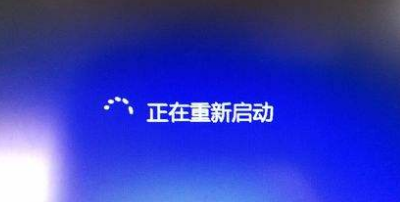
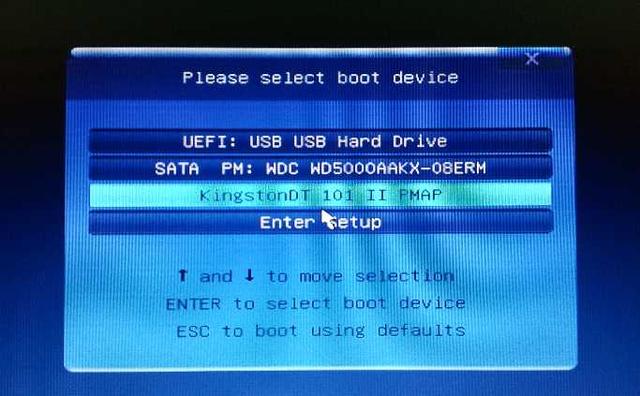
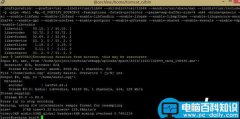
![RedHat服务器上[Errno 5] OSError: [Errno 2]的解决方法](https://img.pc-daily.com/uploads/allimg/4752/11135115c-0-lp.png)

